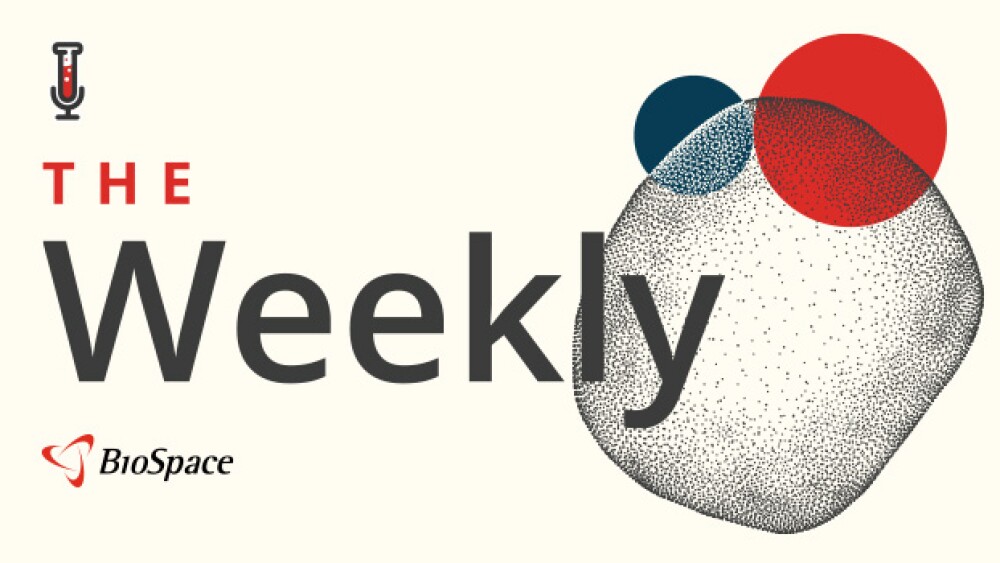(Tokyo, 15 March 2016) Researchers in Japan report that neural stem cells derived from readily available T cell-derived iPSCs provide a neurological disease model when cultured in a novel protocol developed by them. The findings are important for the treatment of Parkinson’s disease and are published in Stem Cell Reports, March 2016.
Neurological disease research, such as on Parkinson’s disease, relies on animal models and immortalized neural cell lines because the central nervous system of patients is not accessible for invasive examination. Cultured neural stem cells could provide an alternative that is closer to the biology of the patient in question. However, due to the epigenetic memories of iPSCs, efficient preparation of neural stem cells requires human induced pluripotent stem cells (iPSCs) usually derived from skin fibroblasts harvested from patient skin biopsies, which can lead to bleeding, scarring and infection. Now researchers from a collaboration of universities and institutions in Japan have demonstrated the potential efficacy of a less invasive alternative.
“T cells can be obtained non-invasively, are easily stored and efficiently reprogrammed, and might therefore be an ideal source of patient-specific iPSCs,” explain Juntendo University’s Wado Akamatsu and Keio University’s Hideyuki Okano, and colleagues in their latest report. However the snag is that the source of stem cells seems to affect what cells they are likely to differentiate into. T cells are a type of lymphocyte or white blood cell and the researchers obtained very few neural cells from T cell-derived iPSCs cultured in standard embryoid bodies compared with the usual fibroblast-derived iPSCs.
To encourage differentiation into neural cells, the researchers tried converting the iPSCs directly into neural stem cells as neurospheres – culture systems of free-floating neural cells - instead of embryoid bodies that contain cells of other germ layers. By using this protocol, T cell-derived iPSCs efficiently differentiated into neural cells as well as fibroblast-derived iPSCs. Neurospheres generated from T cell-derived iPSCs were differentiated into neurons and various neuronal subtypes in similar quantities to those from fibroblast-derived iPSCs.
Furthermore, the researchers confirmed that iPSCs derived from the T cells of patients suffering from juvenile Parkinson’s disease (PARK2) exhibited impaired mitochondrial phenotypes that the team had previously reported using the fibroblast-derived iPSCs derived from this patient.
“These results strongly support that the hiPSCs derived from T-cells can be used as a model of neurological disease by using our differentiation protocol,” state Wado Akamatsu and Hideyuki Okano and colleagues in their latest report. Background
Induced pluripotent stem cells
Induced pluripotent stem cells (iPS cells or iPSCs) are pluripotent stem cells that can be induced from somatic cells by cellular reprogramming. The original set of reprogramming factors (so-called as Yamanaka factors) are the genes Oct4 (Pou5f1), Sox2, cMyc, and Klf4. So far, it has been reported that each of these factors can be functionally substituted by other transcription factors, miRNAs, small molecules, or proteins.
Embryoid bodies
These are three-dimensional aggregates of embryonic pluripotent stem cells. They contain the cells from all three germ layers and are readily scalable because they form in suspension making them useful for culturing large yields of cells. In contrast, the neurosphere culture used by Okano, Akamatsu and collaborators are similar structures but comprising neural cells.
Parkinson’s disease
In Parkinson’s disease (PD), mutation of a specific gene is the cause of PD (familial PD [FPD]) in approximately 10% of PD patients, whereas the other 90% of patients are called sporadic PD. Particularly, understanding the causes of sporadic PD may require statistical approaches that require large numbers of cell lines, further raising the demand for less invasive approaches to gathering neural cell models.
Reference
Takuya Matsumoto,1,2,13 Koki Fujimori,1,13 Tomoko Andoh-Noda,1,3 Takayuki Ando,1 Naoko Kuzumaki,1,4Manabu Toyoshima,5 Hirobumi Tada,6 Kent Imaizumi,1 Mitsuru Ishikawa,1 Ryo Yamaguchi,1,7 Miho Isoda,1,7Zhi Zhou,1 Shigeto Sato,8 Tetsuro Kobayashi,9 Manami Ohtaka,10 Ken Nishimura,10,11 Hiroshi Kurosawa,3Takeo Yoshikawa,5 Takuya Takahashi,6 Mahito Nakanishi,10 Manabu Ohyama,9,14 Nobutaka Hattori,8Wado Akamatsu,1,12,* and Hideyuki Okano1,* Functional Neurons Generated from T Cell-Derived Induced Pluripotent
Stem Cells for Neurological Disease Modeling, Stem Cell Reports, vol. 6, pp.422–435, March 2016.
DOI: http://dx.doi.org/10.1016/j.stemcr.2016.01.010
1. Department of Physiology, Keio University School of Medicine, Shinjuku-ku, Tokyo 160-8582, Japan
2. Institute for Innovation, Ajinomoto Co., Inc., Kawasaki-ku, Kanagawa 210-8681, Japan
3. Division of Medicine and Engineering Science, University of Yamanashi, Interdisciplinary Graduate School of Medicine and Engineering, Kofu, Yamanashi 400-8511, Japan
4. Department of Pharmacology, Hoshi University, Pharmacy and Pharmaceutical Sciences, Shinagawa-ku, Tokyo 142-8501, Japan
5. Laboratory for Molecular Psychiatry, RIKEN Brain Science Institute, Wako, Saitama 351-0198, Japan
6. Department of Physiology, Yokohama City University Graduate School of Medicine, Kanazawa-ku, Kanagawa 236-0027, Japan
7. Regenerative & Cellular Medicine Office, Sumitomo Dainippon Pharma Co., Ltd, Chuo-ku, Kobe 650-0047, Japan
8. Department of Neurology, Juntendo University School of Medicine, Bunkyo-ku, Tokyo 113-8431, Japan
9. Department of Dermatology, Keio University, School of Medicine, Shinjuku-ku, Tokyo 160-8582, Japan
10. Biotechnology Research Institute for Drug Discovery, National Institute of Advanced Industrial Science and Technology (AIST), Tsukuba, Ibaraki 305-8565, Japan
11. Laboratory of Gene Regulation, University of Tsukuba, Faculty of Medicine, Tsukuba, Ibaraki 305-8575, Japan
12. Center for Genomic and Regenerative Medicine, Juntendo University, School of Medicine, Bunkyo-ku, Tokyo 113-8431, Japan
13. Co-first author
14. Present address: Department of Dermatology, Kyorin University School of Medicine, Mitaka, Tokyo 181-8681, Japan
*Correspondence: awado@juntendo.ac.jp (W.A.), hidokano@a2.keio.jp
Neurological disease research, such as on Parkinson’s disease, relies on animal models and immortalized neural cell lines because the central nervous system of patients is not accessible for invasive examination. Cultured neural stem cells could provide an alternative that is closer to the biology of the patient in question. However, due to the epigenetic memories of iPSCs, efficient preparation of neural stem cells requires human induced pluripotent stem cells (iPSCs) usually derived from skin fibroblasts harvested from patient skin biopsies, which can lead to bleeding, scarring and infection. Now researchers from a collaboration of universities and institutions in Japan have demonstrated the potential efficacy of a less invasive alternative.
“T cells can be obtained non-invasively, are easily stored and efficiently reprogrammed, and might therefore be an ideal source of patient-specific iPSCs,” explain Juntendo University’s Wado Akamatsu and Keio University’s Hideyuki Okano, and colleagues in their latest report. However the snag is that the source of stem cells seems to affect what cells they are likely to differentiate into. T cells are a type of lymphocyte or white blood cell and the researchers obtained very few neural cells from T cell-derived iPSCs cultured in standard embryoid bodies compared with the usual fibroblast-derived iPSCs.
To encourage differentiation into neural cells, the researchers tried converting the iPSCs directly into neural stem cells as neurospheres – culture systems of free-floating neural cells - instead of embryoid bodies that contain cells of other germ layers. By using this protocol, T cell-derived iPSCs efficiently differentiated into neural cells as well as fibroblast-derived iPSCs. Neurospheres generated from T cell-derived iPSCs were differentiated into neurons and various neuronal subtypes in similar quantities to those from fibroblast-derived iPSCs.
Furthermore, the researchers confirmed that iPSCs derived from the T cells of patients suffering from juvenile Parkinson’s disease (PARK2) exhibited impaired mitochondrial phenotypes that the team had previously reported using the fibroblast-derived iPSCs derived from this patient.
“These results strongly support that the hiPSCs derived from T-cells can be used as a model of neurological disease by using our differentiation protocol,” state Wado Akamatsu and Hideyuki Okano and colleagues in their latest report. Background
Induced pluripotent stem cells
Induced pluripotent stem cells (iPS cells or iPSCs) are pluripotent stem cells that can be induced from somatic cells by cellular reprogramming. The original set of reprogramming factors (so-called as Yamanaka factors) are the genes Oct4 (Pou5f1), Sox2, cMyc, and Klf4. So far, it has been reported that each of these factors can be functionally substituted by other transcription factors, miRNAs, small molecules, or proteins.
Embryoid bodies
These are three-dimensional aggregates of embryonic pluripotent stem cells. They contain the cells from all three germ layers and are readily scalable because they form in suspension making them useful for culturing large yields of cells. In contrast, the neurosphere culture used by Okano, Akamatsu and collaborators are similar structures but comprising neural cells.
Parkinson’s disease
In Parkinson’s disease (PD), mutation of a specific gene is the cause of PD (familial PD [FPD]) in approximately 10% of PD patients, whereas the other 90% of patients are called sporadic PD. Particularly, understanding the causes of sporadic PD may require statistical approaches that require large numbers of cell lines, further raising the demand for less invasive approaches to gathering neural cell models.
Reference
Takuya Matsumoto,1,2,13 Koki Fujimori,1,13 Tomoko Andoh-Noda,1,3 Takayuki Ando,1 Naoko Kuzumaki,1,4Manabu Toyoshima,5 Hirobumi Tada,6 Kent Imaizumi,1 Mitsuru Ishikawa,1 Ryo Yamaguchi,1,7 Miho Isoda,1,7Zhi Zhou,1 Shigeto Sato,8 Tetsuro Kobayashi,9 Manami Ohtaka,10 Ken Nishimura,10,11 Hiroshi Kurosawa,3Takeo Yoshikawa,5 Takuya Takahashi,6 Mahito Nakanishi,10 Manabu Ohyama,9,14 Nobutaka Hattori,8Wado Akamatsu,1,12,* and Hideyuki Okano1,* Functional Neurons Generated from T Cell-Derived Induced Pluripotent
Stem Cells for Neurological Disease Modeling, Stem Cell Reports, vol. 6, pp.422–435, March 2016.
DOI: http://dx.doi.org/10.1016/j.stemcr.2016.01.010
1. Department of Physiology, Keio University School of Medicine, Shinjuku-ku, Tokyo 160-8582, Japan
2. Institute for Innovation, Ajinomoto Co., Inc., Kawasaki-ku, Kanagawa 210-8681, Japan
3. Division of Medicine and Engineering Science, University of Yamanashi, Interdisciplinary Graduate School of Medicine and Engineering, Kofu, Yamanashi 400-8511, Japan
4. Department of Pharmacology, Hoshi University, Pharmacy and Pharmaceutical Sciences, Shinagawa-ku, Tokyo 142-8501, Japan
5. Laboratory for Molecular Psychiatry, RIKEN Brain Science Institute, Wako, Saitama 351-0198, Japan
6. Department of Physiology, Yokohama City University Graduate School of Medicine, Kanazawa-ku, Kanagawa 236-0027, Japan
7. Regenerative & Cellular Medicine Office, Sumitomo Dainippon Pharma Co., Ltd, Chuo-ku, Kobe 650-0047, Japan
8. Department of Neurology, Juntendo University School of Medicine, Bunkyo-ku, Tokyo 113-8431, Japan
9. Department of Dermatology, Keio University, School of Medicine, Shinjuku-ku, Tokyo 160-8582, Japan
10. Biotechnology Research Institute for Drug Discovery, National Institute of Advanced Industrial Science and Technology (AIST), Tsukuba, Ibaraki 305-8565, Japan
11. Laboratory of Gene Regulation, University of Tsukuba, Faculty of Medicine, Tsukuba, Ibaraki 305-8575, Japan
12. Center for Genomic and Regenerative Medicine, Juntendo University, School of Medicine, Bunkyo-ku, Tokyo 113-8431, Japan
13. Co-first author
14. Present address: Department of Dermatology, Kyorin University School of Medicine, Mitaka, Tokyo 181-8681, Japan
*Correspondence: awado@juntendo.ac.jp (W.A.), hidokano@a2.keio.jp



